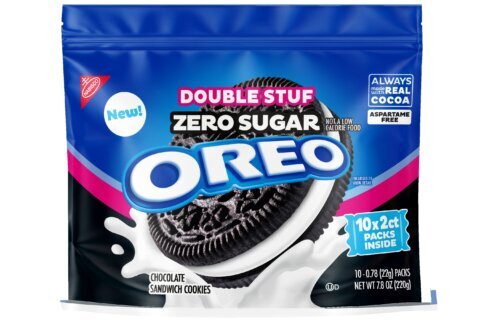WASHINGTON — Ten years ago, Michael Pollan set off on a mission. He had a simple question with a complicated answer: Where does our food come from?
“It’s no longer obvious where your food comes from or how it gets to your plate,” Pollan said. “Our food production has been hidden from us, and it takes some investigative journalism to unpack it.”
Unpack it, he did. Pollan met with farmers, feedlot operators and slaughterhouses to educate himself on America’s postwar food system, and in 2006 published his “eye-opening” findings in the award-winning book, “The Omnivore’s Dilemma.”
Pollan says the experience was horrifying and thrilling at the same time. In some ways, it was even hopeful “because there are incredible alternatives to the industrial system.” But the most gratifying thing, he says, is seeing the nation now ask the same question he once obsessed over.

“Consumers are putting enormous pressure on the food industry to be more transparent, to simplify their food and to shorten the food chain,” Pollan said.
“You see it now when you walk in the supermarket and the packages are telling you about the farms that the food came from and how few ingredients are now on the label … all the information that food manufacturers are trying to give us to assure us about the origin of the food.”
In 10 years, the country has come a long way in improving food’s production and preparation, but Pollan says more still needs to be done. And some changes can even start in the grocery store aisles and at home.
The prescription for healthy humans
If Pollan could wave a magic wand and fix the most pressing issue in the food industry, he would aim that wand at a bottle of antibiotics.
On most conventional farms, Pollan says antibiotics are given to animals to keep them healthy and alive “because they live in stressful and filthy situations.” But using the drugs so liberally can have dangerous consequences.
“The problem when you use antibiotics that way, which is to say everyday in the feed of your food animals, is that sooner or later you’re going to have resistant microbes — bacteria that will no longer be vulnerable to that antibiotic. And indeed that’s happening,” said Pollan, who added that antibiotic-resistant diseases and pathogens are already coming off farms and feedlots.
“This is one of the big reasons why antibiotics don’t work as well as they used to.”
He says the best way to ensure the health of humans is to use antibiotics responsibly and to only give them to animals when they are sick.
“This is just a really dumb use of a precious technology like antibiotics. We’re endangering the health of our children and our own health by using them in this way,” Pollan said.
Currently, there are only voluntary regulations in place for farm operators, but consumers hold a lot of power when it comes to bringing about change. Opting for antibiotic-free meat at the grocery store sends a strong message to food companies.
Variety is vital
Pollan has some disappointing news for those on a quest to find that one must-eat superfood of 2016. Rather than focusing on a single ingredient, such as kale, Pollan says Americans should aspire to eat lots of different things. Not only is a diversified diet better for human health, it’s also better for the environment.
“When everybody starts eating the same thing, you end up with monocultures of it in the field,” Pollan explained. “If you can say at the end of the day that you ate 10 different species, that’s a really good thing.”
Most Americans, however, eat too much of one species, and that is corn. It’s the basis of the American food system, Pollan says. It’s fed to the animals we eat, it’s on the side of the processed food packages we buy and it’s in the sodas we drink.
“Right now, we’re getting a very narrow diet and that means a very narrowly based agriculture, which can be dangerous,” he said.
It’s time to get cooking
In the 1960s, Americans spent an hour a day cooking. Now, that time is down to 27 minutes. This drastic decline in boiling, browning and baking prompted Pollan to explore the effect cooking has on America’s food system.
“I realized at a certain point, that what is driving these big transformations in the American food system is the decline of everyday home cooking,” said Pollan, who published this research in his latest book-turned-Netflix-series, “Cooked.”
When cooking is outsourced to corporations, the impact is felt in the fields.
“To grow all those chicken nuggets, the chicken had to be reinvented and made very cheap in ways that were very hard on the environment and very hard on the chicken. So you have a new agricultural landscape and it is driven by our unwillingness to cook,” he said.
Pollan says the best predictor of a healthy diet is to ask yourself one question: was your dinner prepared by a human or by a corporation? Cooking more at home is one way Pollan says you can improve dietary and planetary health.







